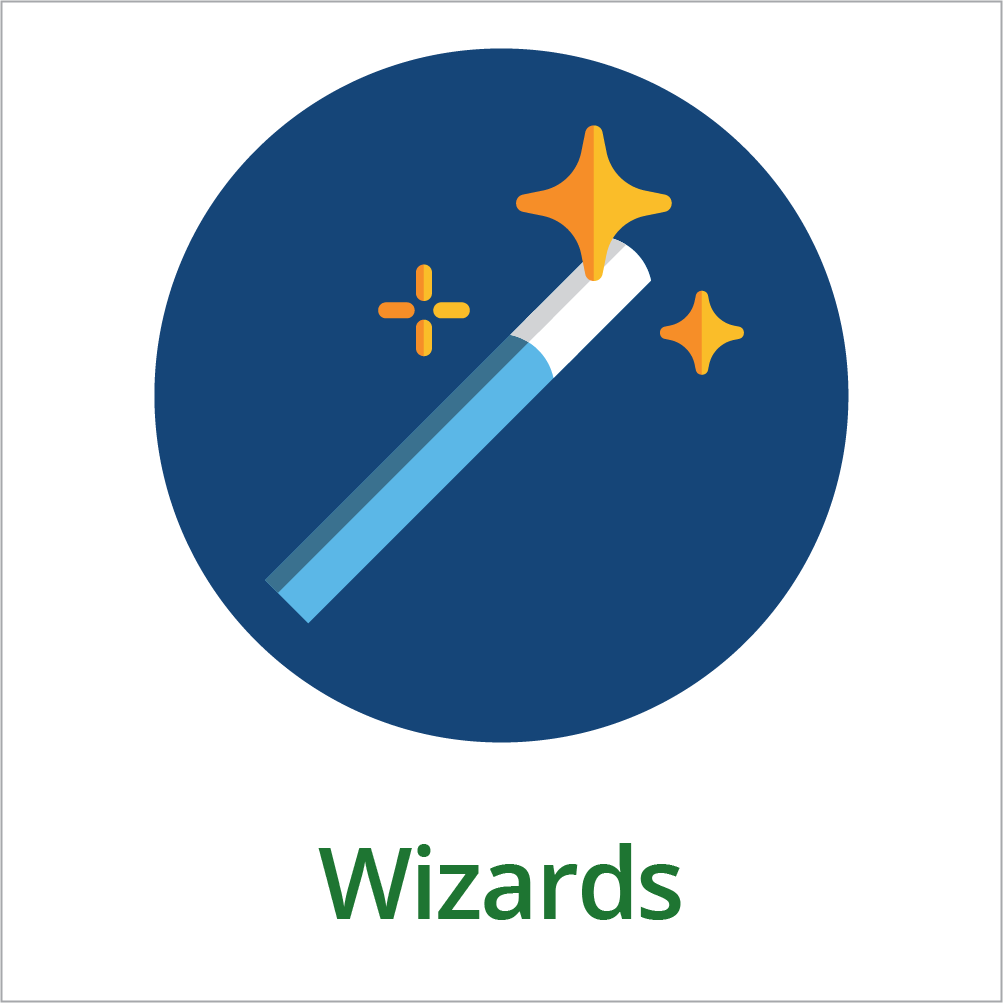
A wizard is a piece of software that simplifies complicated tasks or instructs a user about how to complete a task (Source: Techopedia). It is a kind of user interface and could be called a digital tutorial or online guide. Complex processes in the Part C service system, from eligibility to IFSP to transition, often require several screens/pages in a data system to collect pertinent information. However, collecting these data from families is not necessarily linear, and there are interrelationships among the data. Wizards can help guide users through a series of well-defined steps to collect and enter data for a specific early intervention process, for example, IFSP development.
Connection to DaSy Data System Framework:
System Design and Development QI4: The Part C/Part B 619 state data system has the capacity to support accountability, program improvement, and program operations.
Potential Data Elements
By way of example, the data elements below could be used in a wizard for the development of an initial IFSP.
- Evaluation results for child
- Assessment results for child and family
- Family’s concerns, priorities and resources
- Outcomes for child and/or family
- Planned services, including type of service, planning begin date, setting, frequency, duration and intensity
- Names of IFSP team members
- Date of meeting
- Date family signed IFSP
Functionality
- User interface, navigation and data entry
- Automated validation checks
- Format for on-screen help
- Use of embedded resources
Key Considerations
- Processes where wizards may be helpful include IFSP development, IFSP review, child outcomes ratings (integrated or not within the IFSP), and determination of eligibility.
- Wizards allow for the use of a refined user interface for data entry. They help streamline and clarify data entry tasks.
- Wizards may force a certain order for data entry elements, but do not have to. They may allow the user some flexibility in entering the data, as long as all applicable data elements are entered.
- Wizards may contain automated validation checks to minimize invalid data entry, for example, by making sure a date format is used for an IFSP meeting date, by not allowing out-of-range values (e.g., a COS entry rating must be between 1 and 7) or not allowing values inconsistent with other fields. (Note: Validation checks do not require the use of wizards, but if using wizards, it is wise to make use of them.)
- Wizards may also provide tips and/or additional information, for example, definitions of data elements and response options. Tips can be provided when the user hovers over something or when clicking on an icon.
- Wizards may include embedded resources to assist users with performing a particular task. For example, a wizard may include helpful instructions or link the user to other related resources. See the example below on Maryland’s use of a wizard for help in developing functional outcomes for children.
State Examples
Utah
Video demonstration (view 10:30-14:09)
Shows an overview of wizards and a wizard for child eligibility.
Video demonstration (view 14:09-15:15)
Demonstrates how validation functionality is used within a wizard.
Maryland
Overview of Online IFSP Outcomes Wizard
This 3-page document provides an overview of the IFSP outcomes wizard. The wizard links to a state-developed age anchoring resource (Maryland’s Healthy Beginnings) to reference when developing functional outcomes for children.
Related Resources
The following are resources that provide examples of the use of notification/tickler systems in other industries.
Pro ASP.NET 2.0 Website Programming. Chapter 10 of this ebook addresses the use of web-based wizards and ways to avoid duplicate data entry.
User Interface Design Guidelines, B. Ballard. Chapter 5.3 of this ebook provides information on the use of wizards for complex data entry.
Published June 2017.

